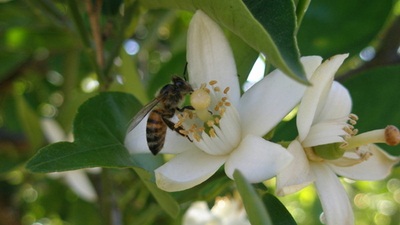
Honey bee populations continued to dwindle over this past winter and many experts are fearful that without a change, these and other type of bee could soon be extinct. According to Bloomberg, U.S. beekeepers lost approximately 31 percent of their colonies during winter 2012/13, and populations haven’t been this low since 2006.
Bees’ extinction would mean more than just an end of a species, it could also greatly affect how well fruit, vegetables and other crops around the world are able to grow, since bees are vital in the pollination process. The experts at the news outlet report farmed bees add $15 billion in value to crops annually.
Where are the bees going?
Change.org reports much of the demise of the honeybee has to do with the use of a pesticide called neonicotinoids. It has been linked to colony collapse disorder, a condition in which bees’ sense of direction is essentially lost, meaning they’re unable to find their way back to their colonies and spend all of their energy searching with no such luck.
In fact, one study published March 29, 2012, in Science Magazine tested the effects of neonicotinoids on bumblebees and found shocking results. The bees were exposed to high levels of the pesticide and then released to forage in the field. These bees saw a dramatic decrease in colony growth and produced 85 percent fewer queens, meaning fewer hives since they have no queens to run them.
How to boost bee population
Though use of neonicotinoids and other pesticides is still prevalent around the country and the world, there are ways in which farmers and individuals can help boost bee population and the main answer is planting flowers. Bloomberg reports a large part of the reason bees are being so affected by pesticides is that they no longer have enough nutrition, which means they have less energy to fight off the issue and protect their hives.
Now, more congress members, like those in Minnesota, are working to pass bills that will create safe havens and honey bee habitat programs that aim to boost the bees’ population. One of the proposed ideas is to have towns and cities plant more wild or native flowers in places like parks, playgrounds or other outdoor public spaces to offer bees hearty meals and perhaps a chance at survival.
Planting gorgeous blooms around your home might ensure the bees in your area have a safe place to go.





